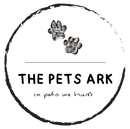An entirely natural phenomenon represented by the seasonal shedding and renewal of hair, shedding often occurs in the spring and fall, when the outside temperature changes and sun exposure decreases or increases. The hair adapts to your environment throughout the seasons.

Dog hair undergoes a year-round cycle of shedding and renewal, just like our hair.
Dogs put on more hair to protect themselves when winter arrives, and lose it when the warm weather comes in the spring.
Shedding usually lasts three to six weeks, and will be shorter if your dog has a thick, straight coat. Shedding will last longer if your dog is rarely outdoors.
Some breeds of dogs are predisposed to massive hair loss, especially those from cold countries and who are used to extreme temperatures (Alaskan Malamute, Siberian Husky, Pyrenean Mountain).
Dog breeds with rough or curly hair, on the other hand, lose very little hair throughout the year.
Your dog's skin must remain healthy, even more so during the shedding period, so it is important to get rid of all dead hair, without showering your dog too much to avoid skin irritations.

Our tips for short hair:
- Brush daily with a soft brush without pressing too hard to avoid irritating your dog's skin. Pay attention to sensitive areas such as the belly and ears.
For long and medium-length hair:
- Brush and detangle frequently with a brush or detangler with retractable teeth. You will need to detangle the hair gently to remove only the dead hairs and avoid pulling out the remaining hairs. Here again, be careful with sensitive areas such as the ears.
There are brushes that can be attached to your vacuum cleaner to avoid painting the walls with your dog's dead hair.
Hormones can also play a role in hair loss - it is not uncommon to see a significant amount of shedding outside of seasonal periods during gestation, lactation or when a female is in heat.

What about food?
It is not necessary to prescribe your dog food supplements to reduce hair loss, but the diet is still a pillar for your dog's health, especially for its coat.
Indeed, a dog that is deficient in proteins, vitamins, minerals and essential fatty acids can have a more significant loss of hair than a dog in full nutritional health.
Make sure that your dog's diet is balanced and of good quality to avoid brittle and dry hair with slow regrowth.
Don't hesitate to supplement with fish oil or brewer's yeast to give your dog the best chance.

Consult a veterinarian if hair loss is more than seasonal and if lesions or dandruff appear on your dog's skin.
See you soon on The Pets Ark !
The Pets Ark family


